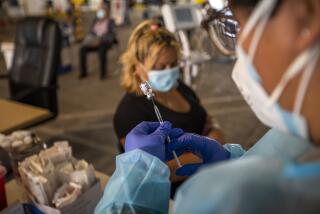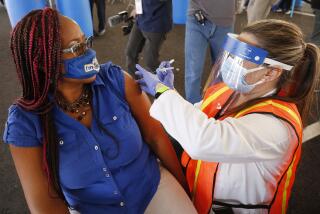California is reserving 40% of COVID-19 vaccine for the neediest. Who will get it?
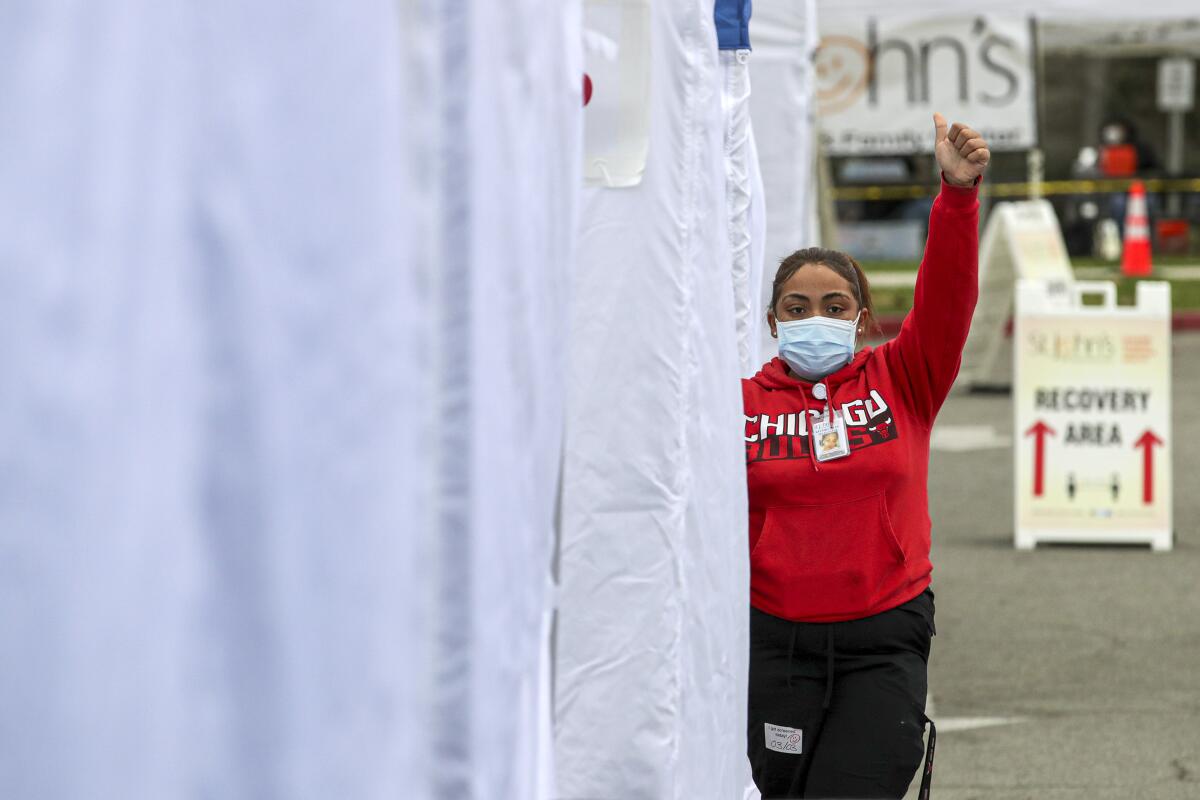
California is embarking on a radically different strategy in its strategy to vaccinate the state — placing a new focus on getting shots into the arms of the neediest of Californians, who have suffered the most in the pandemic.
Gov. Gavin Newsom on Thursday formally announced that the state will reserve 40% of all COVID-19 vaccines going forward to people living in areas that are generally low-income and have crowded housing. Specifically, they will be targeted for people living in roughly 400 ZIP codes who live in the lowest 25% of the census tracts ranked in the California Healthy Places index, a measure of socioeconomic opportunity that takes into account economic, social, education, housing and transportation factors.
Generally speaking, the efforts target residents who live in low-income areas where homes are crowded — areas that have suffered high rates of disease and death from COVID-19.
Why make the change now?
As vaccines have rolled out, it has become clear that the vaccines are disproportionately going to residents of wealthier and predominantly white areas, while fewer vaccines are going into the arms of people in lower-income areas where many Latino and Black residents live.
Of the vaccine doses that have been injected into arms in California, about 17% have been into residents who live in the lowest-income areas of California. By contrast, 34% of doses have been administered into the arms of people living in the wealthiest parts of California, according to Dr. Mark Ghaly, secretary of the California Health and Human Services Agency.
That essentially means people living in the wealthiest parts of California have received double the vaccine doses than those living in the poorest parts of the state.
“We’re still falling short.... We’re not meeting our goals,” Newsom said at a news conference in Stockton Thursday. “An old adage says, continue to do what you’ve done? You’ll get what you got.”
The Latino community has been particularly hit the hardest in California. While Latinos comprise 39% of California’s population — the state’s largest ethnic group — Latinos have represented 46% of COVID-19 deaths and 55% of coronavirus cases.
Ghaly said now is the time to make this change, now that California is emerging from its deadliest surge of the pandemic, and the potential for vaccine supply to grow in the coming weeks and months.
How does the change alter existing vaccination strategies?
Newsom said the state will continue allocating 70% of vaccinations based upon age — now reserved for seniors age 65 and over — while 30% remains reserved for people in front-line essential jobs, such as food and agricultural workers, law enforcement, and emergency responders. Ten percent of doses are reserved for the essential workers who have jobs in education.
But within that framework, California will direct 40% of all available doses to people living in these underserved communities, Newsom said.
People living in those underserved communities who can get the vaccine will still need to meet other eligibility requirements, such as being age 65 or older or working in some of the essential jobs authorized for the vaccine — education and childcare, food and agriculture, healthcare, law enforcement and emergency services.
On March 15, the state will begin to make vaccine available to people with underlying health conditions. Ghaly said that the state’s new vaccine plan will not affect that timeline.
“This does not move that day. It just increases the resolve to make sure that some of our most vulnerable individuals,” he said.
How will the change impact the pace of reopening the economy?
State officials have designed the change to speed up the reopening of California’s economy. Disproportionately sending vaccine to wealthy people who are already less likely to get infected by the coronavirus does not help to stamp out the pandemic as much as getting doses into the people most likely to die from COVID-19.
“We can’t safely reopen your economy until we get this disease behind us. We can’t honestly do that unless we address those communities that are disproportionately vulnerable to this pandemic and its deadly impacts,” Newsom said. And with so much of the economy reliant on lower-income workers hit hard by the pandemic, they need be healthy, too, for the economy to reopen more broadly, he added.
Of the 9.4 million doses administered in California so far, about 1.6 million have been given to people living in the California’s lowest socioeconomic quartile (in other words, the census tracts in California’s bottom 25%). Once 400,000 additional doses are given to people in those areas — expected within the next two weeks — the new plan formally announced this week will result in a relaxation of rules that will enable counties to more quickly exit the most restrictive, or purple, tier of the state’s reopening framework, which will enable counties to reopen indoor operations of restaurant dining rooms, gyms, museums, zoos and aquariums.
“It’s a race to safely, thoughtfully open our economy — mindful that it has to be [an] economy that doesn’t leave people behind,” Newsom said.
How will the state get vaccines into the arms of the neediest?
Newsom said there will need to be efforts to reach residents at work, such as in agricultural fields or other workplaces, as well as in their homes.
Ghaly also said that community clinics that clearly have been doing work to support public health will be a part of the vaccine distribution efforts.
How will officials avoid privileged residents hijacking efforts to get vaccines set aside for the underserved?
This will be a challenge. People in wealthier communities have utilized redistributed access codes to secure vaccine appointments intended to be reserved for lower-income neighborhoods, Newsom said.
One solution, Newsom said, will be to use single-use access codes to secure appointments, instead of group-access codes, to set up appointments.
Newsom also acknowledged that counties have had problems with the state’s vaccine appointment system, My Turn, and pledged to continue improving it.
“We’re going to have to target appointments and make sure individuals that live in our targeted communities are actually the ones who get the specific codes, who get the appointment blocks,” Ghaly said. “And that becomes easier not just on My Turn, but through phone banking and other opportunities to get appointments for those who don’t have the technology at hand, the time on hand to sit there and refresh their browser over and over.”
What are the details in how the economy’s reopening might speed up?
A big hurdle for a number of California counties is getting its adjusted daily coronavirus rate, for every 100,000 residents, at or below 7, which would allow them to exit the most restrictive tier and permit them to begin reopening indoor operations of restaurant dining rooms, gyms and museums.
Per 100,000 residents, L.A. County currently has an adjusted daily case rate of 7.2; Orange, 7.6; Riverside, 11.3; San Bernardino, 9; San Diego, 10.8 and Ventura, 10.6.
Once an additional 400,000 doses are administered into residents of the most underserved communities — meaning that a cumulative total of 2 million doses will have been administered into these community members — the state will relax the threshold for exiting the most restrictive tier to a rate per 100,000 residents of 10 or less.
Under the new proposed rules, L.A., Orange and San Bernardino counties would already be eligible to exit the purple tier, while Riverside, Ventura and San Diego counties would be close to qualifying.
When a total of 4 million doses are administered into residents of underserved communities, state officials also plan to relax the requirements to enter the least restrictive tiers, orange and yellow. The orange tier would allow sports fans to return to outdoor professional sports venues; the yellow tier allows large theme parks to reopen.
Ghaly said California will still retain some of the strongest pandemic rules in the nation, and warned that should pandemic measures worsen, counties could be subject to more restrictive tiers again.
How soon could counties exit the purple tier as soon as the 2 million threshold is reached?
If counties have met the relaxed threshold for exiting the purple tier for at least two consecutive weeks, they could find themselves exiting the purple tier immediately once that 2 million threshold is reached, Ghaly said.
As a result, some Southern California counties could be eligible to reopen indoor restaurant dining and indoor gyms sooner than expected. Until this week’s announcement, many Southern California counties had been at least two weeks away from exiting the purple tier.
But with the new framework presented this week, there is a plausible scenario in which L.A., Orange and San Bernardino counties could be eligible to reopen indoor dining and indoor gyms as soon as next week. Those three counties all reported fewer than 10 daily coronavirus cases per 100,000 residents on Tuesday, which meets the proposed new threshold for exiting the purple tier, but failed the existing threshold to leave the purple tier, which is 7 or fewer daily coronavirus cases per 100,000 residents.
To get there, California will need to have successfully administered the cumulative 2 million doses to people living in underserved communities by next week. In addition, L.A., Orange and San Bernardino counties would need to see its adjusted daily case rate, per 100,000 residents, remain at 10 or less on Tuesday. If all those criteria are met, it is plausible that those counties could exit the purple tier as soon as next week.
Residents of what areas will be prioritized for vaccinations?
In Southern California, underserved areas include South L.A., southeast L.A. County, the Eastside, Long Beach, the eastern San Fernando Valley, Santa Ana, El Monte, Oxnard and heavily Latino communities along the Interstate 10 corridor between Pomona and San Bernardino.
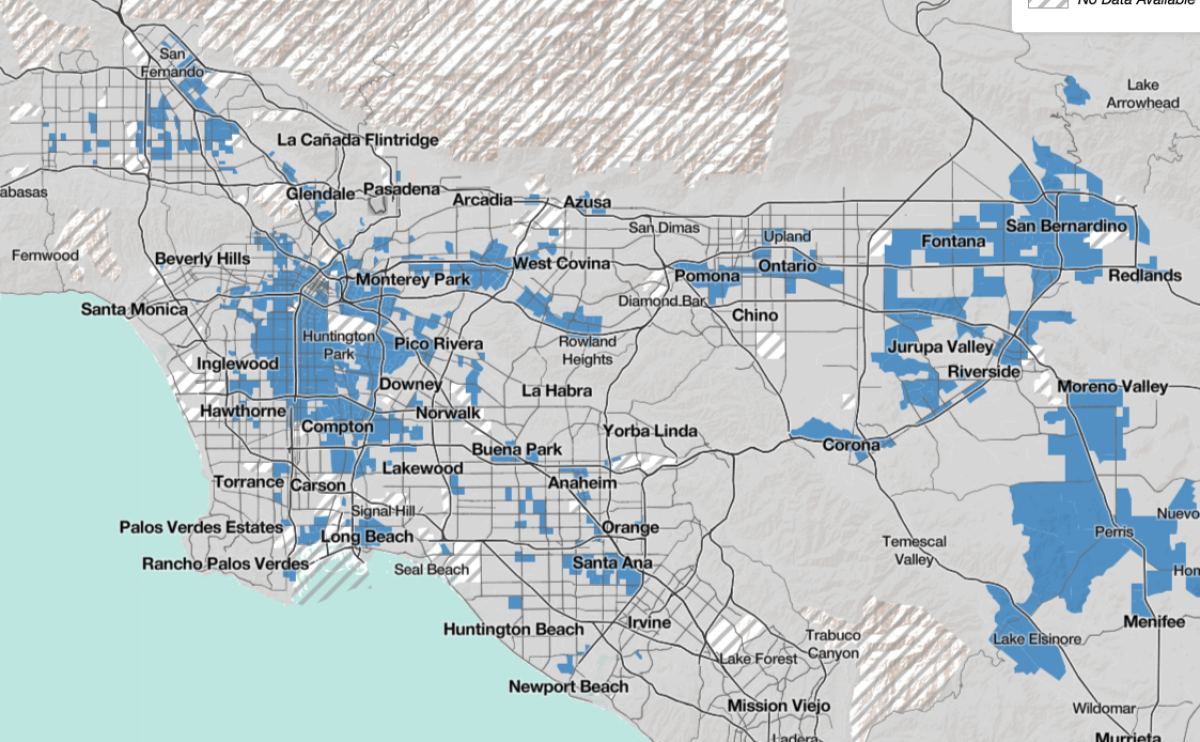
In San Diego County, areas include neighborhoods east and southeast of downtown San Diego, as well as National City, Chula Vista, San Ysidro, City Heights and El Cajon.
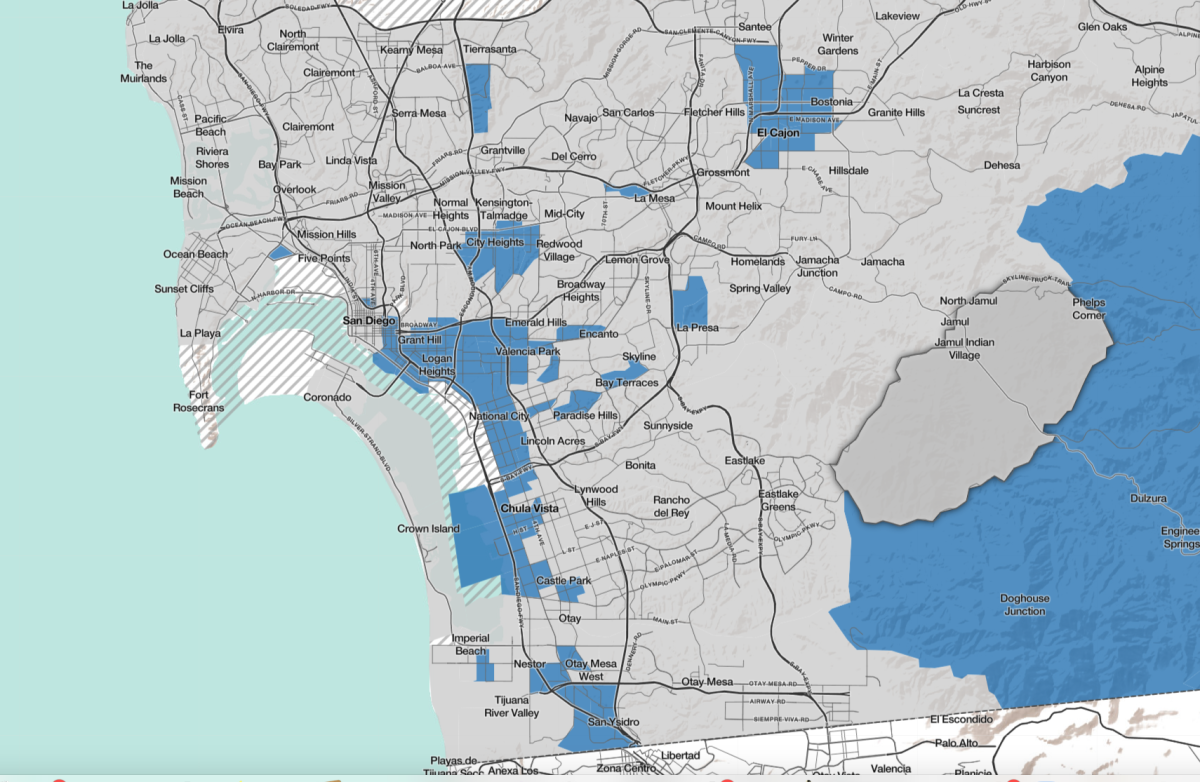
Much of the Central Valley and parts of the Salinas Valley are included in the map of areas targeted for vaccination, including Sacramento, Stockton, Modesto, Salinas, Watsonville, Merced, Fresno and Bakersfield.
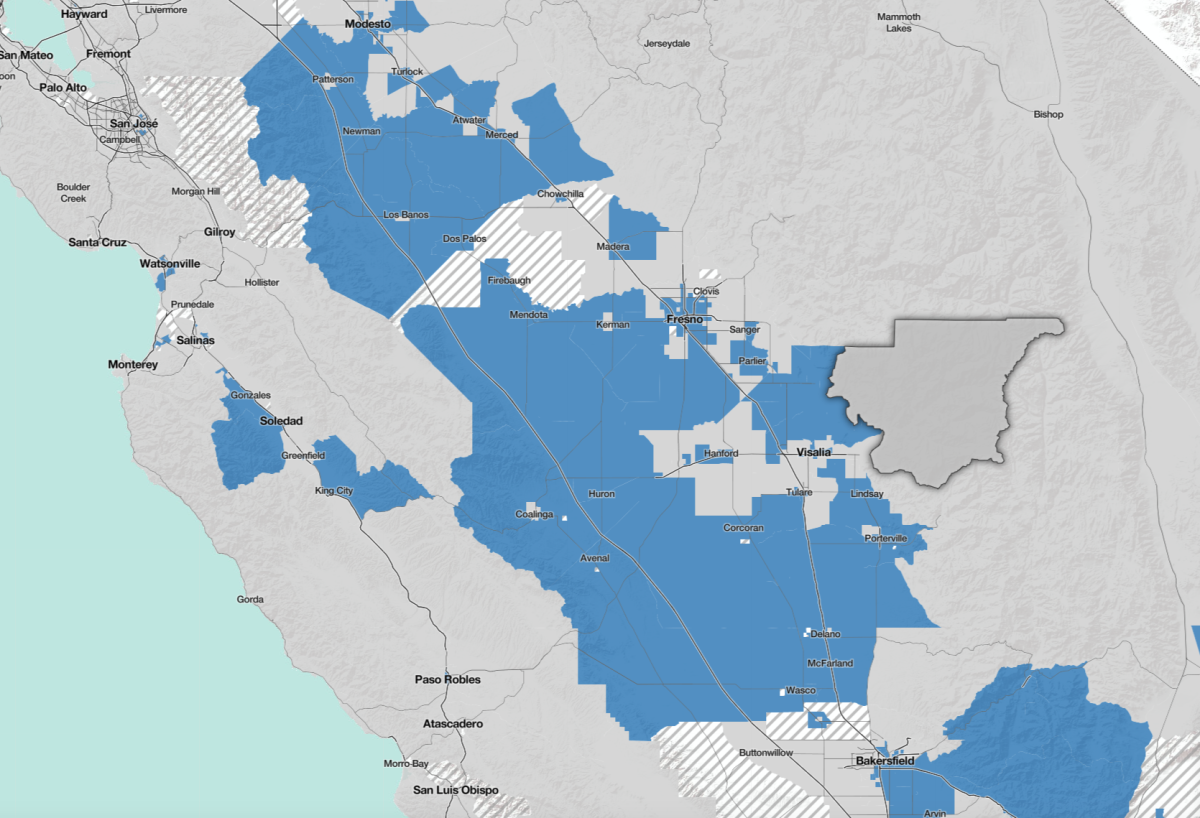
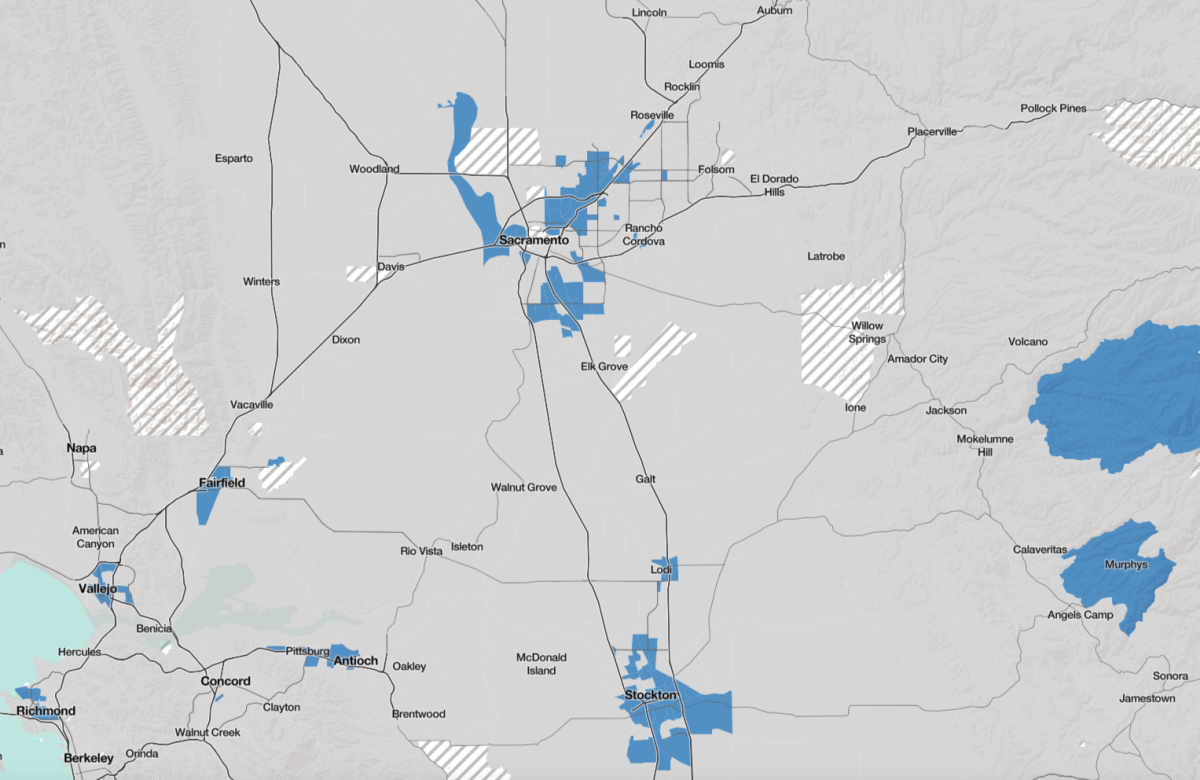
In the Bay Area, neighborhoods in the San Francisco’s Chinatown, Bayview-Hunters Point, Tenderloin, South of Market and Mission districts are on the list, as are West Oakland and East Oakland, Richmond and East San Jose.
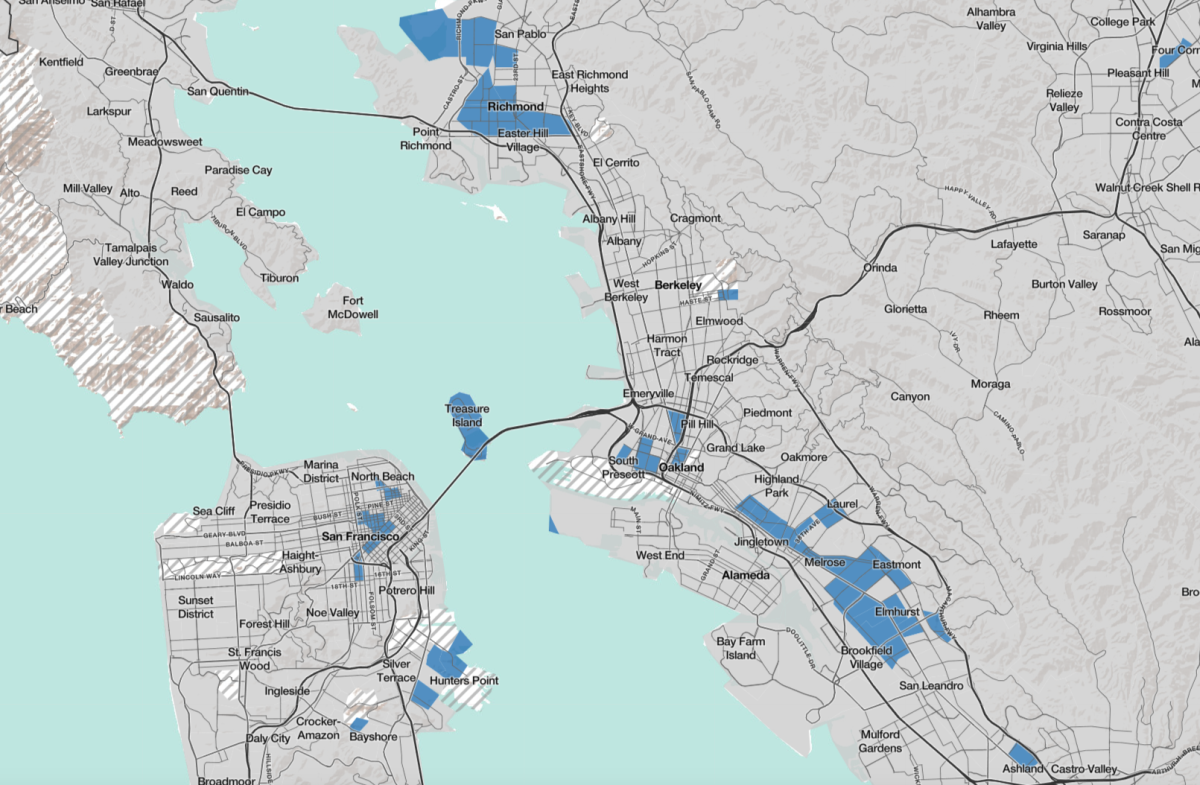

Large swaths of the northern part of the state are also being targeted, including portions of communities in and around Yuba City, Marysville, Oroville, Chico, Orland, Ukiah, Eureka, Arcata, Crescent City, Yreka, and Redding.
More to Read
Start your day right
Sign up for Essential California for news, features and recommendations from the L.A. Times and beyond in your inbox six days a week.
You may occasionally receive promotional content from the Los Angeles Times.
